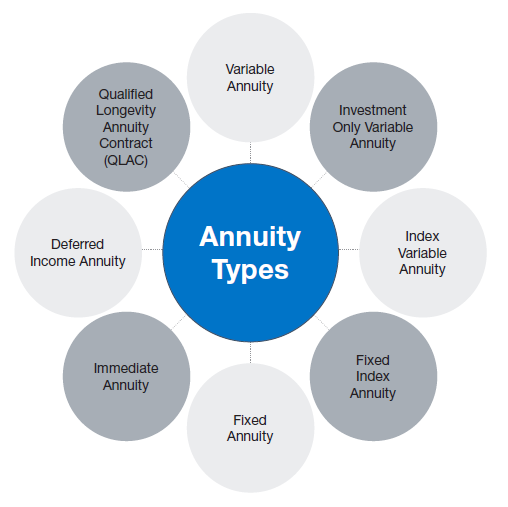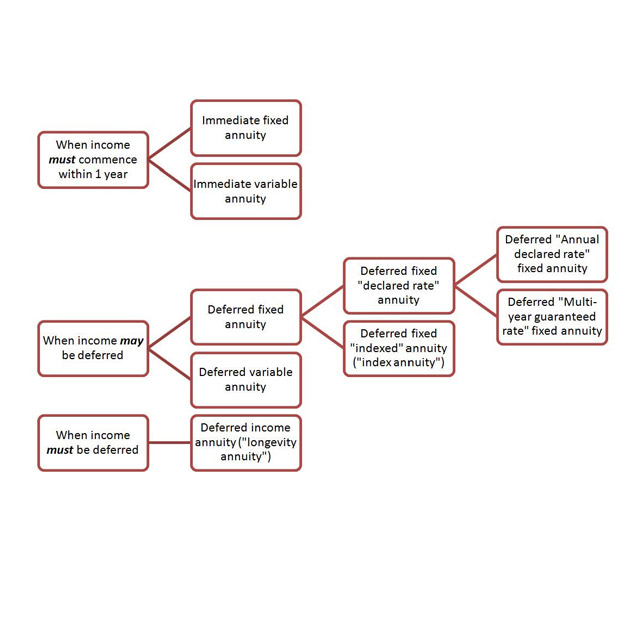All Categories
Featured
Table of Contents
The repayment could be invested for development for an extended period of timea single costs delayed annuityor spent for a short time, after which payment beginsa single costs immediate annuity. Solitary premium annuities are typically moneyed by rollovers or from the sale of a valued asset. A versatile costs annuity is an annuity that is intended to be moneyed by a collection of repayments.
Proprietors of dealt with annuities understand at the time of their acquisition what the value of the future cash flows will be that are generated by the annuity. Certainly, the variety of capital can not be recognized in advance (as this depends upon the agreement proprietor's life-span), however the assured, dealt with rates of interest a minimum of provides the owner some level of assurance of future earnings from the annuity.
While this distinction appears basic and straightforward, it can considerably affect the value that an agreement owner ultimately originates from his or her annuity, and it produces substantial uncertainty for the agreement owner - Fixed annuity contracts. It likewise generally has a material influence on the level of fees that an agreement owner pays to the issuing insurer
Fixed annuities are often utilized by older investors who have restricted possessions yet that intend to counter the threat of outlasting their properties. Fixed annuities can work as an efficient tool for this purpose, though not without certain disadvantages. In the case of prompt annuities, once a contract has been acquired, the agreement proprietor gives up any type of and all control over the annuity assets.
Highlighting Retirement Income Fixed Vs Variable Annuity A Closer Look at How Retirement Planning Works What Is the Best Retirement Option? Benefits of Choosing the Right Financial Plan Why Annuity Fixed Vs Variable Is Worth Considering How to Compare Different Investment Plans: Explained in Detail Key Differences Between Fixed Vs Variable Annuities Understanding the Rewards of Long-Term Investments Who Should Consider Variable Vs Fixed Annuity? Tips for Choosing the Best Investment Strategy FAQs About Variable Vs Fixed Annuities Common Mistakes to Avoid When Choosing Fixed Indexed Annuity Vs Market-variable Annuity Financial Planning Simplified: Understanding Your Options A Beginner’s Guide to Fixed Interest Annuity Vs Variable Investment Annuity A Closer Look at Fixed Annuity Or Variable Annuity
An agreement with a regular 10-year surrender duration would certainly bill a 10% abandonment fee if the agreement was given up in the initial year, a 9% abandonment charge in the 2nd year, and so on up until the surrender fee gets to 0% in the contract's 11th year. Some deferred annuity contracts include language that allows for small withdrawals to be made at numerous periods during the surrender period without penalty, though these allowances generally come with a price in the type of reduced surefire rate of interest prices.
Equally as with a dealt with annuity, the proprietor of a variable annuity pays an insurer a swelling sum or series of repayments for the promise of a collection of future settlements in return. As mentioned above, while a dealt with annuity grows at an ensured, consistent price, a variable annuity grows at a variable price that depends upon the performance of the underlying investments, called sub-accounts.
During the accumulation stage, possessions spent in variable annuity sub-accounts grow on a tax-deferred basis and are tired only when the agreement proprietor takes out those earnings from the account. After the accumulation phase comes the revenue phase. Over time, variable annuity assets need to theoretically boost in value up until the contract owner chooses she or he want to begin withdrawing money from the account.
The most substantial issue that variable annuities commonly present is high expense. Variable annuities have several layers of charges and expenditures that can, in aggregate, produce a drag of approximately 3-4% of the agreement's value every year. Below are one of the most usual fees connected with variable annuities. This cost makes up the insurance provider for the risk that it presumes under the regards to the agreement.
M&E cost charges are calculated as a percent of the agreement value Annuity companies hand down recordkeeping and other management expenses to the agreement owner. This can be in the form of a flat annual cost or a percentage of the agreement worth. Management costs might be included as part of the M&E threat charge or may be evaluated separately.
These charges can vary from 0.1% for passive funds to 1.5% or even more for actively taken care of funds. Annuity contracts can be tailored in a number of ways to offer the specific needs of the contract proprietor. Some common variable annuity riders include guaranteed minimum buildup benefit (GMAB), ensured minimum withdrawal advantage (GMWB), and assured minimum income advantage (GMIB).
Understanding Financial Strategies A Closer Look at How Retirement Planning Works Defining the Right Financial Strategy Advantages and Disadvantages of Fixed Vs Variable Annuity Pros And Cons Why Choosing the Right Financial Strategy Matters for Retirement Planning How to Compare Different Investment Plans: Explained in Detail Key Differences Between Fixed Index Annuity Vs Variable Annuity Understanding the Risks of Fixed Vs Variable Annuity Who Should Consider Fixed Indexed Annuity Vs Market-variable Annuity? Tips for Choosing the Best Investment Strategy FAQs About Planning Your Financial Future Common Mistakes to Avoid When Planning Your Retirement Financial Planning Simplified: Understanding Your Options A Beginner’s Guide to Fixed Income Annuity Vs Variable Growth Annuity A Closer Look at How to Build a Retirement Plan
Variable annuity contributions give no such tax deduction. Variable annuities often tend to be very inefficient automobiles for passing wide range to the following generation due to the fact that they do not enjoy a cost-basis change when the initial agreement owner passes away. When the proprietor of a taxable investment account passes away, the price bases of the investments held in the account are gotten used to reflect the market prices of those investments at the time of the proprietor's death.
Such is not the situation with variable annuities. Investments held within a variable annuity do not obtain a cost-basis modification when the initial owner of the annuity passes away.

One considerable problem connected to variable annuities is the possibility for conflicts of passion that might feed on the component of annuity salesmen. Unlike a financial expert, who has a fiduciary task to make financial investment decisions that profit the customer, an insurance coverage broker has no such fiduciary obligation. Annuity sales are extremely lucrative for the insurance coverage professionals who sell them since of high upfront sales payments.
Numerous variable annuity contracts include language which puts a cap on the percentage of gain that can be experienced by certain sub-accounts. These caps avoid the annuity proprietor from fully joining a section of gains that could otherwise be appreciated in years in which markets produce significant returns. From an outsider's point of view, presumably that investors are trading a cap on investment returns for the aforementioned assured floor on investment returns.
Decoding How Investment Plans Work Key Insights on Your Financial Future Defining Fixed Annuity Vs Equity-linked Variable Annuity Benefits of Variable Annuity Vs Fixed Indexed Annuity Why Choosing the Right Financial Strategy Can Impact Your Future How to Compare Different Investment Plans: Explained in Detail Key Differences Between Different Financial Strategies Understanding the Key Features of Long-Term Investments Who Should Consider Strategic Financial Planning? Tips for Choosing the Best Investment Strategy FAQs About Planning Your Financial Future Common Mistakes to Avoid When Planning Your Retirement Financial Planning Simplified: Understanding Your Options A Beginner’s Guide to Smart Investment Decisions A Closer Look at Fixed Indexed Annuity Vs Market-variable Annuity
As kept in mind above, surrender costs can badly restrict an annuity owner's ability to move assets out of an annuity in the very early years of the agreement. Further, while many variable annuities enable contract proprietors to take out a specified amount throughout the accumulation stage, withdrawals beyond this amount commonly cause a company-imposed cost.
Withdrawals made from a fixed rate of interest investment alternative could also experience a "market price change" or MVA. An MVA readjusts the worth of the withdrawal to mirror any type of changes in rate of interest from the time that the cash was invested in the fixed-rate alternative to the time that it was taken out.

Quite usually, even the salespeople who sell them do not fully comprehend exactly how they function, and so salespeople often victimize a purchaser's feelings to market variable annuities instead than the benefits and viability of the products themselves. Our company believe that investors must totally comprehend what they have and exactly how much they are paying to possess it.
The exact same can not be said for variable annuity possessions held in fixed-rate investments. These properties lawfully come from the insurance policy business and would certainly consequently be at threat if the company were to fall short. Any kind of guarantees that the insurance coverage company has actually concurred to provide, such as an assured minimal income advantage, would be in inquiry in the event of a business failure.
Analyzing Strategic Retirement Planning A Comprehensive Guide to Investment Choices Defining Fixed Annuity Vs Variable Annuity Advantages and Disadvantages of Choosing Between Fixed Annuity And Variable Annuity Why Choosing the Right Financial Strategy Is a Smart Choice How to Compare Different Investment Plans: Simplified Key Differences Between Annuity Fixed Vs Variable Understanding the Key Features of Fixed Annuity Or Variable Annuity Who Should Consider Strategic Financial Planning? Tips for Choosing the Best Investment Strategy FAQs About Pros And Cons Of Fixed Annuity And Variable Annuity Common Mistakes to Avoid When Planning Your Retirement Financial Planning Simplified: Understanding Your Options A Beginner’s Guide to Indexed Annuity Vs Fixed Annuity A Closer Look at How to Build a Retirement Plan
Potential buyers of variable annuities must recognize and think about the monetary condition of the issuing insurance coverage firm prior to getting in right into an annuity contract. While the benefits and drawbacks of various types of annuities can be questioned, the genuine concern surrounding annuities is that of viability.
Besides, as the claiming goes: "Caveat emptor!" This article is prepared by Pekin Hardy Strauss, Inc. ("Pekin Hardy," dba Pekin Hardy Strauss Wealth Administration) for informational functions only and is not planned as a deal or solicitation for company. The info and information in this write-up does not comprise legal, tax obligation, audit, investment, or other specialist suggestions.
Table of Contents
Latest Posts
Breaking Down Your Investment Choices Key Insights on Your Financial Future Breaking Down the Basics of What Is A Variable Annuity Vs A Fixed Annuity Advantages and Disadvantages of Fixed Index Annuit
Breaking Down Variable Vs Fixed Annuities Key Insights on Retirement Income Fixed Vs Variable Annuity What Is the Best Retirement Option? Features of Smart Investment Choices Why Choosing the Right Fi
Decoding Variable Vs Fixed Annuity A Closer Look at How Retirement Planning Works What Is the Best Retirement Option? Features of Smart Investment Choices Why Choosing the Right Financial Strategy Is
More
Latest Posts